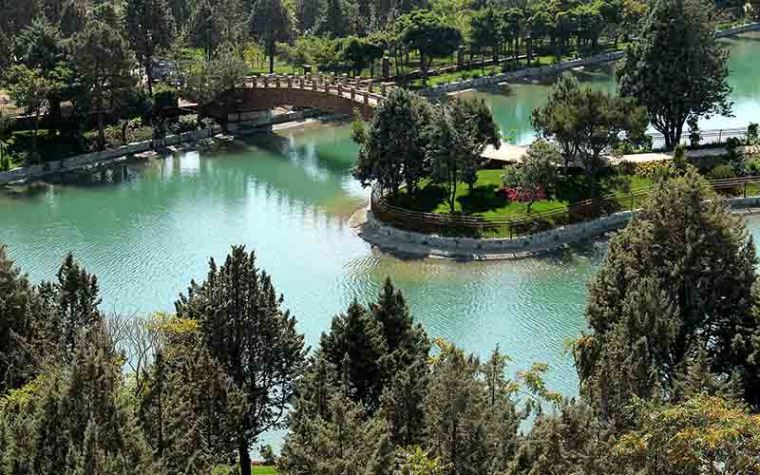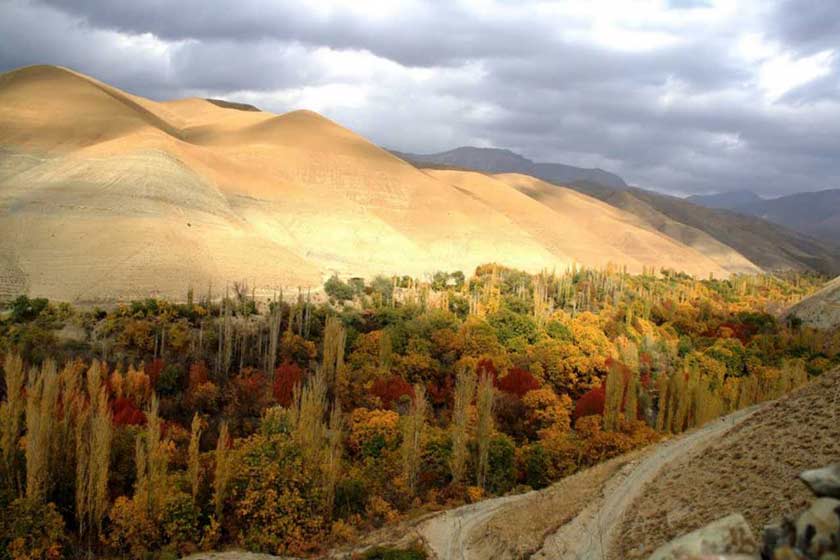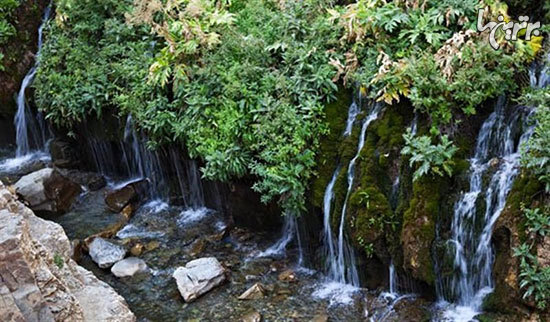


In the present day, Karaj is a major suburb of Tehran. But until the second half of the 20th century, it was only known as a summer resort of the sub-district (dehestān) of Sāvoj Bolāq, along the road between Tehran and Qazvin, in the foothills of the Alborz mountains. The large, modern industrial city with a population of 1.4 million in 2006 is built on a wide plain with some gentle hills, north of the rich agricultural plain of Šahriār and east of the plains of Sāvoj Bolāq and Haštgerd. Historical sketch. The area of Karaj has been inhabited since the Bronze Age at Tepe Khurvin (Ḵorvin; Van den Berghe, pp. 37 ff.), and the Iron Age at Kalāk on the left bank of the Karaj River (see Malekzādeh et al.). Under the Safavids, a large caravansary was built there, as well as a stone bridge that was, until the late 20th century, the main crossing into Karaj, since the river was often difficult to ford (Kleiss, 1996, p. 100).
During the Qajar period, Karaj was known mainly as a stage on the main road between Qazvin and Tehran. Most Western and Persian travelogues did not make extensive comments about this place—for example, “a prosperous village where the main highway from Qazvin to Tehran crosses a river of the same name” (Clapp, p. 70). In 1810, Solaymān Mirzā, once the prince governor of Kermānšāh, built the palace of Solaymāniya as a summer resort (Šaybāni, pp. 66-108). It had four towers and was surrounded by gardens and walls, and the main reception room was decorated with two large paintings by ʿAbd-Allāh Khan Naqqāšbāši, depicting the shah with his relatives. This palace was described in 1860 by E. B. Eastwick (I, p. 217) as abandoned and used only as a shelter for travelers. Solaymāniya was later restored by Nāṣer-al-Din Shah. In 1917, the School of Farming, replacing the Moẓaffari Agricultural School (founded in 1900 in Tehran), was established in the large gardens and the last remaining buildings of Solaymāniya. Later, Reza Shah Pahlavi formally granted the place to the new Faculty of Agriculture of the University of Tehran (see faculties of the university of tehran i). Transit and industrial town. The trans-Alborz caravan road to Čālus through the Karaj valley, built in the late Qajar period, was transformed into a modern highway. It linked Tehran to the Caspian Sea via the Kandovān tunnel, which was opened in 1938. Another major road passing through Karaj was the highway from Tehran to Gilān and Azerbaijan, the first major paved road built in Iran.
Total: 1 hotel . Showing 1 - 1 view all
Not what you're looking for? Try your search again
Total: 1 tour . Showing 1 - 1 view all
Not what you're looking for? Try your search again
Click me below to chat on WhatsApp or send us an email to info@whypersia.com